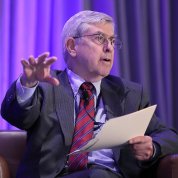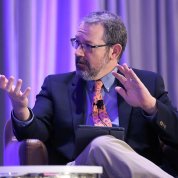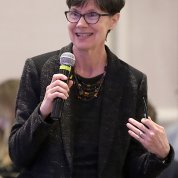All Hands on Deck
HEAL Investigators Meet, Collaborate to Tackle Opioid Crisis
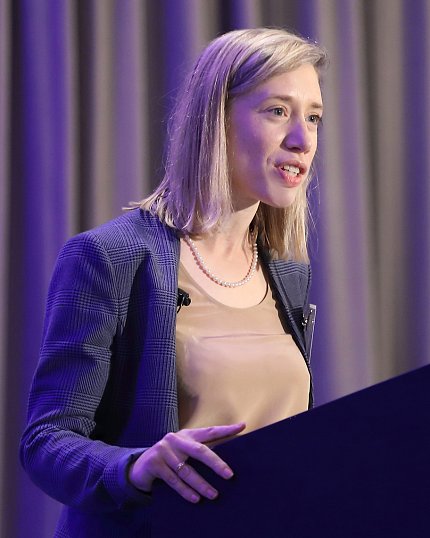
Photo: Chia-Chi Charlie Chang
It started with a disastrous miscalculation. The danger continued undetected, bubbling under the surface for nearly two decades. Prescription opioids dispensed to relieve pain were mistakenly deemed non-addictive as long as the patient was in pain, and doctors increasingly prescribed them, triggering dependence, an upsurge in illicit opioid use and deadly overdoses.
The federal government has declared the opioid epidemic a national public health emergency and summoned an all-hands-on-deck approach to combat the crisis. Congress so far has allocated $1 billion to NIH’s HEAL (Helping to End Addiction Long-term) Initiative, which has awarded more than 400 research grants and contracts nationwide to expedite solutions to opioid addiction and develop safer treatments for pain.
More than 2 million Americans are addicted to opioids. Most of them do not receive effective treatment, and those who are often don’t stay in treatment long enough to recover fully. In 2017 alone, more than 47,000 people died from opioid-related overdoses.
“The [opioid] crisis is a formidable challenge that’s rapidly evolving, so our research response has to match both in magnitude and in urgency,” said HEAL Initiative director Dr. Rebecca Baker during remarks at a 2-day meeting that convened hundreds of HEAL investigators in January at the Hyatt Regency in Bethesda.
The latest statistics show the first glimmers of improvement. In 2018, opioid overdose deaths began to decline for the first time in 20 years, reported Health and Human Services Secretary Alex Azar at the meeting. Estimates from 2019 show more people are receiving effective treatment for opioid use disorder (OUD), while opioid prescriptions have continued to decline since 2016.
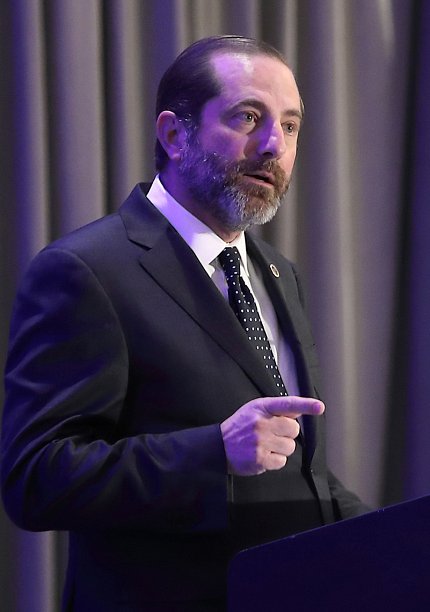
Photo: Chia-Chi Charlie Chang
“While we’re beginning to turn the tide on the crisis, our job is far from complete,” said Azar. “All of HHS has been enlisted in this fight.
HEAL is a collaborative effort among federal partners, academic researchers, the private sector, patients and communities. Across NIH, 20 of 27 ICs are lending research expertise on cross-cutting challenges that span addiction science, neuroscience, mental health, pediatric health, complementary medicine, and development of non-addictive drugs and devices.
“We didn’t get into this difficulty overnight and we’re not going to get out of it overnight either,” said NIH director Dr. Francis Collins. “The long-term solutions to addiction have to include finding ways to help those who are currently addicted, but also doing prevention and providing opportunities for people with chronic pain so they don’t fall into the same trap.”
At the same time, “research findings coming out of this initiative should not sit in publications or under embargo before they can be accessed by our broader community,” said Baker. The HEAL initiative aims to be a pioneer in open access to data, recognizing that collaboration flourishes in that kind of environment, and people who are addicted or experiencing daily chronic pain need alternatives fast.
Treating Pain
More than 50 million Americans live with chronic pain.
“Opioids are incredible short-term analgesics,” said Dr. Lynn DeBar of Kaiser Permanente Washington Health Research Institute during a panel discussion. “But when you look at patients with persistent pain, the conversation you want to have is [regarding] their long-term functioning.” In many cases, non-drug-based therapies, such as physical therapy and exercise, can get people active and lessen disability, she said.
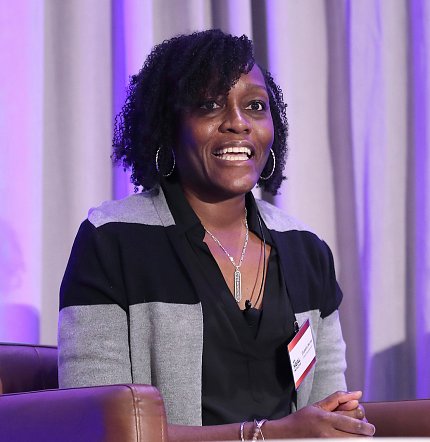
Photo: Chia-Chi Charlie Chang
Dupelia B. Numa, a pain patient since 2008, was in constant pain from a series of complex chronic conditions. Numa, a retired Air Force master sergeant and current photography/media student, had tried various pain medications over the years that didn’t work or had serious side effects. On a panel discussing pain, Numa said she wishes doctors would have shared drug-free alternatives with her sooner. She has found relief through yoga, acupuncture, and cognitive-behavioral therapy.
“Had I had that approach in the beginning, it would’ve been a better result for me,” said Numa, who already takes many medications to control her conditions. “Once I realized it didn’t have to be a pain medication, it could be something else [to ease my pain], it was a welcome breath of fresh air.”
For others, medication may be the best option, but as doctors dispense fewer opioid prescriptions, many pain patients are struggling to find potent, safer alternatives. “You want to be out of pain,” said Numa, “but you don’t want to be addicted.”
Dr. Travis Rieder, a bioethics expert at Johns Hopkins University, developed opioid dependence after receiving multiple and increasing doses of opioids for 5 weeks while in the hospital for a series of surgeries.
“I had my foot blown apart in a motorcycle accident,” he said, “and it was nothing like the horror of opioid withdrawal.”
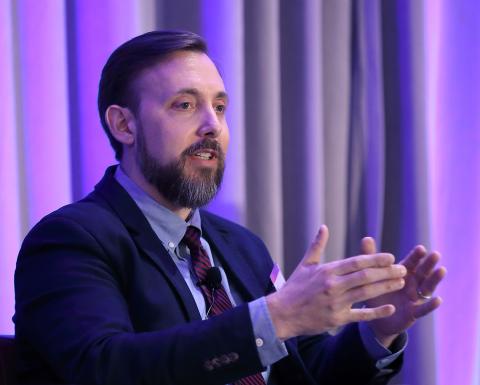
Photo: Chia-Chi Charlie Chang
Doctors had told Rieder to stop taking opioids and he ended up spending 29 days suffering through intense withdrawal symptoms because nobody, not even pain management doctors, could advise him how to safely discontinue them.
“Without better options, this crisis will go on for real people whose recovery will take time and whose pain management will take time,” said Baker.
Through the HEAL Initiative, investigators are working to expand pain management options, from medications to device-based interventions and other complementary approaches. Researchers are developing and validating new targets for pain therapies, studying prevention strategies and working to better understand, test and treat pain for different and co-occurring conditions.
“Through the research,” said Numa, she is hopeful “there will be more options.”
Reducing Stigma
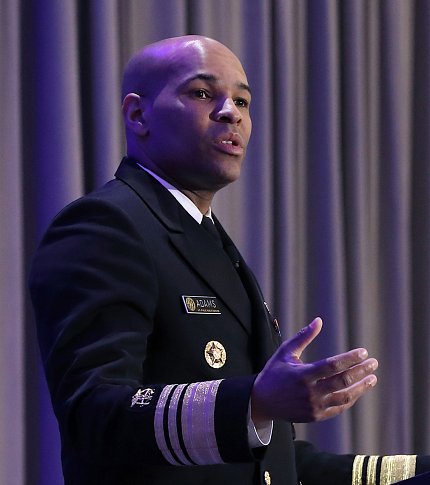
Photo: Chia-Chi Charlie Chang
“Our biggest killer isn’t cigarettes or obesity or even [the illicit synthetic opioid] fentanyl,” said Vice Adm. Dr. Jerome Adams, U.S. surgeon general and a practicing anesthesiologist, during his keynote address. “Our biggest killer is stigma because stigma keeps people in the shadows; [it] keeps people from asking for help or even admitting they have a problem.”
For Adams, it’s personal. He told of his younger brother, Phillip, currently incarcerated for crimes committed to support his opioid addiction, which stemmed from unrecognized, untreated mental illness.
“Stigma can undermine our efforts at every stage of our prevention-to-treatment continuum,” said University of Delaware investigator Dr. Valerie Earnshaw. “We can develop the best behavioral intervention, medications or treatment, but if stigma prevents people from using them, then our efforts within this initiative will be stunted.”
HEALing Communities
Overcoming the opioid epidemic will require the collective efforts of many communities: clinicians, patients, researchers, policymakers, business leaders, law enforcement, educators.
The surgeon general encourages everyone to become first responders, by getting trained to administer and carrying naloxone, an FDA-approved drug that can save the life of someone overdosing on opioids. Adams also urges more conversations. Discuss prevention, share stories, fight stigma, he urged.
“I feel we are making an impact in significant ways,” said Adams, “not just distributing naloxone—because that saves a life today—but also using that opportunity to lower stigma and change the narrative, which will save lives tomorrow [and for years to come].”
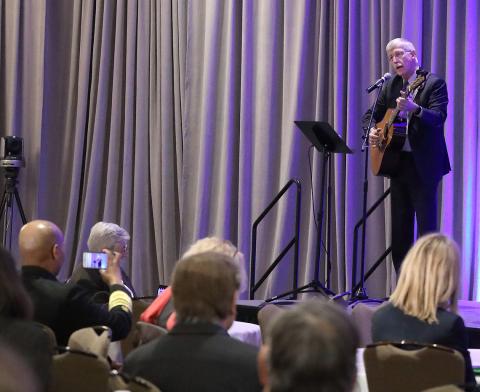
Photo: Chia-Chi Charlie Chang
Healing communities means finding effective non-opioid treatments for pain as well as proven strategies to prevent and treat opioid misuse and addiction. HEAL investigators are researching: novel medications for OUD from craving to overdose, withdrawal to relapse; treatments for vulnerable populations such as newborns exposed to opioids and adolescents at risk of misusing opioids; and strategies to implement proven interventions at the local level.
“Tragically, in so many ways, the federal government was too slow in recognizing the seriousness of the opioid addiction crisis, but we’re now moving rapidly,” said Azar. “I want to assure you: your work will save lives and we will put it to use as quickly as possible.”


